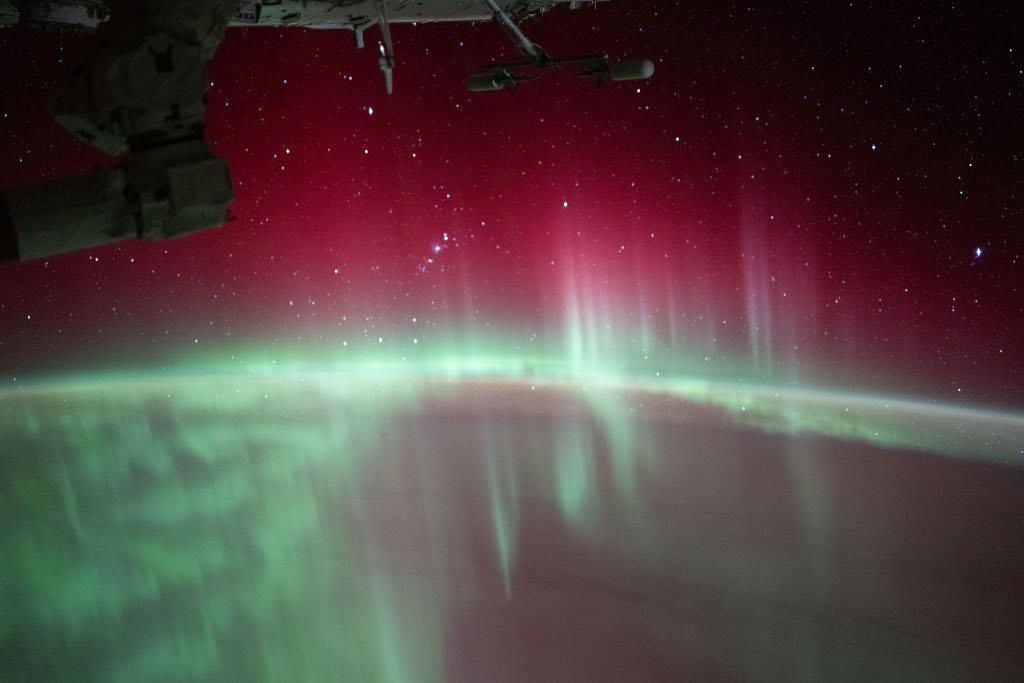南極光和國際空間站
Aurora Australis and the International Space Station

發表日期:2024-09-13
這張來自國際空間站的快照是 8 月 11 日在地球南半球印度洋上空約 430 公里處拍攝的。壯觀的景象從南面和東面向下俯瞰地球的地平線,穿過紅色和綠色的澳大利亞極光帷幕。極光是由在軌道前哨水平上仍然存在的極度稀薄的高層大氣中的受激氧原子發射的。在 100 至 250 千米的高度上,由原子氧發出的綠色輻射在這一景象中占主導地位,而由原子氧發出的紅色輻射可延伸到 500 千米的高度。除了這些南半球的光芒,從低地球軌道上看到的星空也從南半球的角度展現出來。獵戶座腰帶上的恆星和獵戶座星雲就在中心左側的地球邊緣附近。天狼星是大犬座的首顆恆星,也是地球夜晚最亮的恆星,位於南半球星空右側邊緣的中央上方。 仰望:國際觀月夜
原文:This snapshot from the International Space Station was taken on August 11 while orbiting about 430 kilometers above the Indian Ocean, Southern Hemisphere, planet Earth. The spectacular view looks south and east, down toward the planet's horizon and through red and green curtains of aurora australis. The auroral glow is caused by emission from excited oxygen atoms in the extremely rarefied upper atmosphere still present at the level of the orbiting outpost. Green emission from atomic oxygen dominates this scene at altitudes of 100 to 250 kilometers, while red emission from atomic oxygen can extend as high as 500 kilometers altitude. Beyond the glow of these southern lights, this view from low Earth orbit reveals the starry sky from a southern hemisphere perspective. Stars in Orion's belt and the Orion Nebula are near the Earth's limb just left of center. Sirius, alpha star of Canis Major and brightest star in planet Earth's night is above center along the right edge of the southern orbital skyscape. Looking Up: International Observe the Moon Night
※ 本文由萌芽機器人自動轉貼自每日一天文圖(Astronomy Picture of the Day,APOD),原文為英文,正體中文是透過 DeepL 翻譯及 OpenCC 進行自動處理,內容僅供參考,若有任何錯誤之處還請見諒!
關於每日一天文圖:每日一天文圖網站是美國國家航空暨太空總署與密西根理工大學提供的服務,網站每天提供一張影像或圖片,並由天文學家撰寫扼要說明其特別之處。